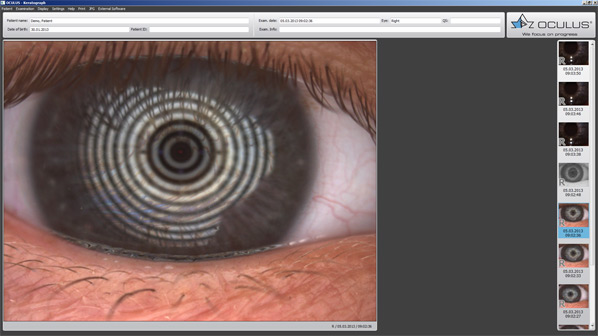
Dry Eye
15
Jun
Dry Eye
Post in WPOC (English)
by Super User

What is Dry eye?
Dry eye is a condition in which a person doesn't have enough quality tears to lubricate and nourish the eye. Tears are necessary for maintaining the health of the front surface of the eye and for providing clear vision.
Dry eye is a common and often chronic problem, particularly in older adults.
(Reference from American Optometric Association)
What causes dry eyes?
Dry eyes can develop for many reasons, including:
- Age. Dry eyes are a part of the natural aging process. The majority of people over age 65 experience some symptoms of dry eyes.
- Gender. women are more likely to develop dry eyes due to hormonal changes caused by pregnancy, the use of oral contraceptives, and menopause.
- Medications. certain medicines, including antihistamines, decongestants, blood pressure medications and antidepressants, can reduce tear production.
- Medical conditions . People with rheumatoid arthritis, diabetes and thyroid problems are more likely to have symptoms of dry eyes.
- Life style. Staring at computer screens, televisions, or electronic readers for long periods of time, exposure to air conditioning, wind, smoke, and dry climates
- Other factors. Long term use of contact lenses, refractive eye surgery, some medications, medical conditions, such as, rheumatoid arthritis, diabetes, thyroid problems and inflammation of the eyelids.
(Reference from American Optometric Association)
Dry Eye Treatment
How are dry eyes treated?
- Artificial tear. The primary approaches used to manage and treat mild dry eyes. Preservative-free artificial tear solutions are recommended because they contain fewer additives, which can further irritate the eyes.
- Warm Compresses. A study out of Oxford University found that heating the lids about 9ºF significantly increased meibomian oil production, and result to relief the dry eye.
- Lid Massage. It can dramatically improve symptoms by helping re-establish tear film stability. The technique: Extend finger and apply light pressure. Roll the finger upward on the lower lid two times while in upgaze, then roll the finger downward on the upper lid two times while in downgaze.
Tips to reduce symptoms of dry eyes:
- Remember to blink regularly when reading or staring at a computer screen for long periods of time.
- Increase the humidity in the air at work and at home.
- Wear sunglasses outdoors, particularly those with wraparound frames, to reduce exposure to drying winds and the sun.
- Nutritional supplements containing essential fatty acids may help decrease dry eye symptoms in some people. Ask your optometrist if taking dietary supplements could help your dry eye problems.
- Avoiding becoming dehydrated by drinking plenty of water (8 to 10 glasses) each day.
The content in this article is for reference only, it does not provide any professional diagnosis or treatment advice.

